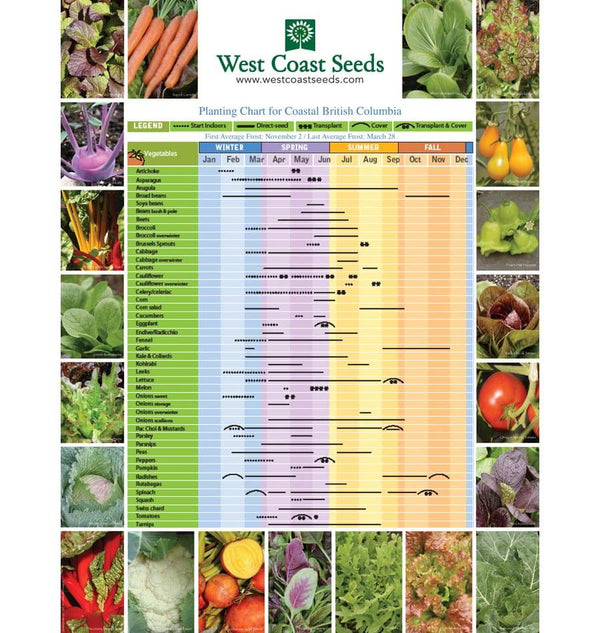To create these charts, we look at clusters of the most common average frost dates for a given area and estimate how many weeks make sense to plant seeds before or after the last frost date. Given the unpredictability of weather patterns, this exercise is a bit tricky and all about averages.
First frost: The first time frost occurs in the autumn in an average year.
Last frost: The last time frost occurs in winter or spring in an average year.
First and last frost dates are recorded by government-run weather stations all over North America, and the average is based on a fifty-year history for each region. These dates vary widely by region. Hardiness zones also have to do with cold weather, but are quite a separate concept. Hardiness zones are established by measuring how cold and extreme the average winter gets in a given area, and whether specific perennial plants might survive over winter there. We might say that Echinacea is hardy to Zone 3, but that only reveals that Echinacea is likely to survive over winter in Zones 3 and up. Zone 2 is likely too cold for Echinacea to make it through the winter. We don’t provide hardiness numbers for annual plants, as they are not expected to survive winter in any climate.
Our regional planting charts are intended to offer general guidance for garden planning, but they do not account for exceptional weather circumstances and our changing climate.
Also download the West Coast Seeds Crop Planning Tool to plan spacing as well as timing.
You can additionally download Blank Templates of our Vegetable Planting Chart and Flower & Herb Planting Chart to keep track of your seed sowing dates.























